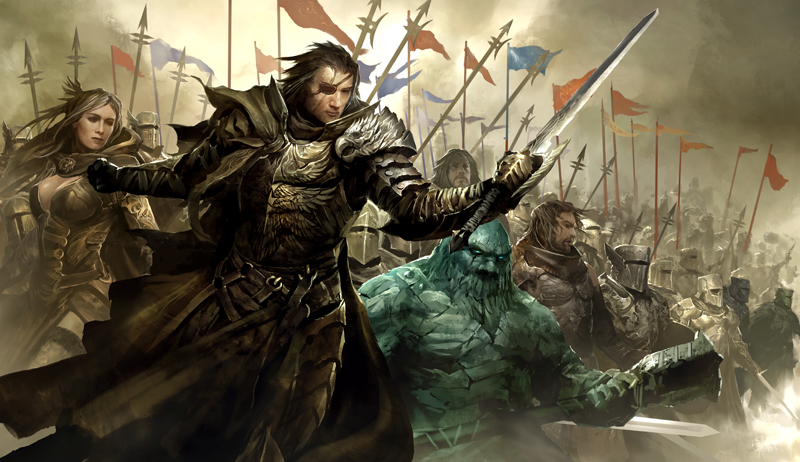Activision Blizzard has had an incredibly steady stock over the past few years, despite a general downturn for AAA publishers during that time, mostly due to the consistency of income from subscriptions in World of Warcraft. While 74 percent of analysts rate Activision Blizzard a buy and 26 percent of analysts rating it a hold, there’s reason to be concerned in the near term.
“Vivendi is a publicly traded French company that has seen its shares steadily battered for the last three years,” writes Agustino Fontevecchia. “The shares have fallen from a high of 23.90 euros all the way down to a low of 12.70 euros, leaving shareholders very angry with management. Fearing for their jobs, management at Vivendi has decided to sell some of their equity interests around the world in an effort to boost their own share price.”
“Activision was their first logical candidate for sale. The stock has done virtually nothing for the past two years, usually trading in a tight range between $12.50 and $11.50,” he notes. “The only times that we have seen this company spike was when a new hit videogame was released, usually causing the stock to make a sudden 5 percent jump only to quickly trickle back down over the coming week. Not much can be said about this company in terms of dividends either; the common has a yield of 1.6 percent.”

Vivendi wanted a 20 percent premium on the private market for their majority ownership of Activision Blizzard. When they found no takers, they slashed the price down to 12 percent, and despite using veteran bankers at Goldman Sachs and Barclays, they were unsuccessfully… and it might be due to a game that Blizzard does not even produce.
“World of Warcraft (WoW) has helped Activision Blizzard maintain its stock price, with this one single game providing roughly 30 percent of the revenue for the entire company via its expansion packs and monthly payments,” writes Fontevecchia. “Subscription revenue alone totaled $1.2 billion both in 2008 and 2009, and an additional $1.36 billion in 2010. Corresponding costs (the overhead cost of maintaining WoW’s virtual world) totaled a mere $404 million in the first two years mentioned, and $241 million in 2010. This means that WoW subscriptions have generated gross margins over 80 percent consistently. Since WoW has very high operating leverage any decline in revenue will have dramatic effects on the bottom line.”
“Guild Wars 2 is a fierce competitor that is creeping up on Activision’s WoW title at the end of August 2012 that we believe many investors have not factored into their ATVI recommendations. Guild Wars 2 has already been ruled by many on blogs and discussion boards as superior to WoW just based on the experience gamers shared while playing the Guild Wars 2 beta. Competition seems to be coming in strong indeed against WoW,” he notes. “To play Guild Wars 2, all you need to do is pay $60 for a copy of the game and you no longer have to pay any monthly fees. WoW requires an initial purchase of $60 and a payment of $15 per month just to play the game. Guild Wars 2 will has the potential to attract many of the new MMORPG players that have been stuck in limbo. What we have now is an entire generation of gamers that tried to switch from WoW to a new MMORPG but found themselves exactly where they started due to lackluster titles being released. With the release of a new game that has better graphics and better gameplay than WoW, one would be hard pressed to find reasons why gamers would not make the switch.”

“The bottom line here is that gamers like to start on level playing fields. Gamers love to save money. Gamers are always in a frantic rush to play superior games. These three factors are the main reasons why Guild Wars 2 will win over market share from WoW,” Fontevecchia adds.
If World of Warcraft lost 25 percent of its subscribers to Guild Wars 2, gross profit of the subscription business could drop to $779 million from the current $1.12 billion, reducing software gross profit drop to $75 million from $100 million. This could translate to a drop of up to $366 million in gross profit in the 6 months following the release of Guild Wars 2 at the end of August 2012.
The consensus target from analysts for Activision Blizzard is $15.59 for the current fiscal year and the stock is currently trading at slightly below $12. If WoW loses 25 percent of its subscribers to Guild Wars 2 in the current fiscal year, the stock could slip to $9.
“Now once the stock goes to $9, what do you think Vivendi is going to do?” asks Fontevecchia. “A company that has seen its shares fall by over 45 percent in the last 3 years is not going to just sit back and watch billions of dollars erode from their balance sheet. If Vivendi cannot find a buyer on the private market, and we are confident that they will be unable to do so, then management will begin selling their position in Activision on the open market in order to avoid heavy losses. This is where the real money will be made. If we were to see Vivendi selling even 10 percent of their position on the open market the damage to the stock would be devastating.”
“Even though Vivendi is currently exploring several options to raise its stock price, we ask you to make a simple judgment call here. If you were Vivendi, would you not sell a company that is losing massive percentages of market share to its competitors If you were on the management team of Vivendi would you honestly not cut your losses by selling Activision when the chief game of the company suddenly begins failing to competition Let the bulls bid up the stock based on the record breaking Diablo 3 sales, it only helps to mask the coming fundamental problem of the business,” concluded Fontevecchia.
Source: Forbes

